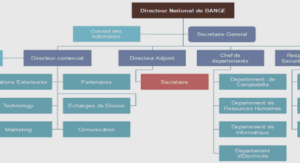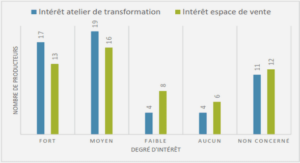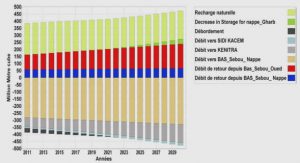Cours sensitivity analysis, tutoriel & guide de travaux pratiques en pdf.
Groundwater Age Simulations
In addition to using groundwater flownets, simulated mean groundwater ages can also be useful for interpreting flow systems. Groundwater age is defined as the time elapsed since water entered the groundwater system (Kazemi et al. 2006; Goode 1996). In the simplest form of this definition, the kinetic or advective age of groundwater can be simulated by tracking particles along the groundwater flow lines. The time taken by individual particles to travel across the system from recharge to discharge would then yield groundwater ages. This method, also known as the piston flow model, is based on the velocity field derived from a groundwater flow model and assumes that a groundwater molecule (or a conservative tracer) migrates along flow paths without mixing (Goode 1990; Kazemi et al. 2006; Bethke and Johnson 2008).
Although groundwater flow systems are defined by streamlines or flow paths, individual water molecules entering the subsurface will mix and disperse along and across these flow paths, each following a unique pathway (Bethke and Johnson 2008). A more realistic definition of groundwater age would then be the average time that a group of water molecules of a given sample has spent in the subsurface (Bethke and Johnson 2008). This definition also better reflects the analytical methods used to measure groundwater ages of a given water sample using age tracers; it is not the specific age of individual molecules that is measured but rather the concentration ratios of various molecule groups which yield an average age.
In the TR2 groundwater model, mean groundwater age is taken to be the average (mean) age of a packet of water molecules at a given point in space (x,y) (Molson & Frind, 2017), and is calculated using Goode’s (1996) method for direct simulation of groundwater age. The method uses an analogy to solute transport in which the concentration (kg/m3) is replaced by the groundwater age. The age mass, the product of groundwater age, fluid density and sample volume can then be mixed, dispersed and transported as a solute using the advection-dispersion transport equation through a porous medium (Equation 11; see also (Molson & Frind, 2012):
where,
A= Mean age (T)
Di,j = Hydrodynamic dispersion tensor (L2/T)
v= velocity (L/T)
+1 : Age growth factor (1 day/day)
TR2 is used herein to simulate advective-dispersive groundwater ages along the studied cross-Section. Comparisons are then made between these advective-dispersive ages, particle-track based advective ages, and later with measured 14C ages.
Advective-Dispersive Groundwater Age
The calibrated steady-state groundwater flow model presented in Section 3.3 was used as the base velocity field to simulate mean groundwater ages within the 2D cross-Section of the Chaudière-Appalaches regional model. A finite element mesh identical to the flow model was used in the age transport model.
Transport Model Boundary Conditions and Parameters
In the age transport model, lateral and bottom boundaries are set as zero age-mass gradient Type-2 (Neumann) boundaries. Those Sections of the top surface water table which act as inflow recharge boundaries are set as a Type-1 (Dirichlet) boundary condition with a fixed age of A=0 days. Surface nodes acting as discharge points, that is nodes connected to elements with an outward pointing velocity vector, are applied a zero-gradient age boundary condition. A growth rate of +1 day/day ensures the aging of water as the simulation progresses over time until steady-state was reached between the constant ageing of water and rejuvenation from younger recharge water.
The dispersion tensor Dij in Equation 11 is defined using the Lichtner dispersion formulation (Lichtner et al. 2002) which has four dispersivity components: two longitudinal (αLH and αLV) and two transverse dispersivities (αTH and αTV). The angle between the velocity vector and the vertical axis is used to determine the dispersion terms in the tensor. To define the longitudinal horizontal dispersity (αLH), Xu and Eckstein (1995) provide a relationship between dispersivity and the field scale which was derived from a weighted statistical method giving less importance to less reliable data. With their method, the increase in longitudinal dispersivity with scale is considerably reduced when the flow spatial scale exceeds 1 km, yielding more realistic dispersivities for large-scale studies such as that presented herein. Based on Xu and Eckstein (1995), the longitudinal horizontal dispersivity of the current transport model was set to 50 m, which is also consistent with the Schulze-Makuch (2005) set of porous media-specific equations for defining the relationship between scale and dispersivity. The longitudinal vertical dispersivity (αLV) was set to 10 m, while the two transverse dispersivities were set to 0.05 m. The molecular diffusion coefficient was assumed 1×10-10 m2/s, similar to a conservative tracer. Similar dispersion and diffusion terms were applied in 3D age transport modelling by Molson & Frind (2012).
The Peclet accuracy criterion, which constrains the spatial discretization depending on the relative magnitude of advection to dispersion (see Molson & Frind, 2017), is respected throughout most of the domain in the x direction, with about 90% of the elements respecting the criterion. However, due to the relatively low, but realistic, vertical dispersivity, about 54% of the elements respect the y-direction Peclet criterion. To reduce simulation times, time steps were increased progressively (Table 7) until steady-state was reached. The Courant stability criterion, which constrains the time step (Molson & Frind, 2017) is generally respected in both the x and y directions for all time steps (Table 7). Since the simulations showed good convergence and relatively minor numerical oscillations, the spatial and temporal discretization was considered acceptable.
Mean Groundwater Age Distribution
The advective-dispersive groundwater age simulation reached steady state at 47.54 Ma for the base case scenario (Figures 29 to 34), which corresponds to the maximum simulated groundwater residence times in the Grenville basement rock. The nested flow systems identified in Section 3.3 create a unique mean age distribution which is organized into a complex pattern.
The active flow layer within the local flow system is characterised by short residence times, with mean groundwater ages being generally less than 100 years old (Figures 31 to 34). Interestingly, the mean age simulation shows that the depth of local flow systems extends well below the active flow layer. With mean ages exponentially increasing with depth, the maximum mean age of groundwater in the local flow systems is 100,000 years (Figures 31 to 34). The exponential increase in groundwater ages is attributed to the exponential decrease in the bedrock hydraulic conductivity.
Furthermore, while the presence of an intermediate flow system in the Appalachian Highlands was clear from the flow simulation, the direct simulation of mean groundwater ages also suggested the existence of such a system with a similar age distribution in the St. Lawrence Lowlands, between about 15,000 m and 30,000 m along the Section (Figures 29 and 34).
However, contrary to the Appalachian Highlands, in the St. Lawrence Lowlands the age distribution is marked by an abrupt transition between the regional and the smaller scale flow systems. In some portions of the cross-Section, for example, the mean age gradient spans two orders of magnitude over very short spatial scales on the order of 50 to 100 meters. This is consistent with Zijl’s (1999) observation that in real steady-state flow systems, mixing zones between transport systems are relatively thin, and that the interface is generally sharp between water bodies with different water qualities (or ages) which belong to different flow systems.
On a regional scale, the average residence times in the deep flow system gradually increase toward the discharge area. Regional flow in the St. Lawrence Lowlands seems to follow a deep preferential pathway through the carbonate platform before emerging near the St.
Lawrence River. This is due to the difference in the assigned hydraulic conductivities between the Lorraine formation, the Carbonate platform and the Utica Shale. Among these three units, the Carbonate platform was assigned the highest hydraulic conductivity while the Utica shale was assigned the lowest, creating a hydraulically isolated permeable unit in which water could travel faster than in the overlying and underlying geologic units. Slower flow above the carbonate platform results in an inverted distribution of groundwater residence times where older groundwater in the shale can be found above younger water in the carbonates (Figure 29).
Figure 29 Simulated mean groundwater ages with superimposed streamlines from the calibrated flow model.
Figure 3029 Simulated mean groundwater ages with superimposed streamlines from the calibrated flow model Zoom 1 (Appalachian Highlands): mean age and streamlines (location shown in Fig. 30).
Figure 31 Simulated mean groundwater ages with superimposed streamlines from the calibrated flow model Zoom 2 (St. Lawrence Lowlands close to St. Lawrence River): mean age and streamlines (location shown in Fig. 30).
Figure 30 Simulated mean groundwater ages with superimposed streamlines from the calibrated flow model Zoom 3 (St. Lawrence Lowlands close to Appalachian front): mean age and streamlines (location shown in Fig. 30).
Figure 32 Simulated mean groundwater ages with superimposed streamlines from the calibrated flow model Zoom 4 (Appalachian Highlands): mean age and streamlines (location shown in Fig. 30).
Figure 33 Simulated mean groundwater ages with superimposed streamlines from the calibrated flow model Zoom 5 (middle of St. Lawrence Lowlands): mean groundwater age and streamlines
Comparison between Advective and Advective-Dispersive Groundwater Ages
While the preceding mean age simulation fully accounts for age growth along flow lines as well as dispersive age mixing across flow lines, the approach is computationally demanding, requiring long simulation times because of the Courant constraint on the time steps. As an alternative, simulation of purely advective age growth along streamlines, but neglecting dispersive mixing, is much faster. In this Section, the two approaches are compared using the Chaudière-Appalaches cross-Section flow model.
Advective groundwater ages were here calculated using particle tracking with Tecplot (©Tecplot Inc. 2014), which tracks particles by integrating the velocity field using a 4th order Runge-Kutta method. The flow velocities were obtained from the simulated nodal streamfunctions, and are located at the centroids of the triangular elements (Molson & Frind, 2017). Particle tracks and corresponding advective ages are superimposed on the advective-dispersive age distribution in Figures 35 to 37.
For intermediate and regional flow paths, just below the local transport systems, total advective ages and advective-dispersive mean ages appear to be in the same order of magnitude. This is attributed to the relatively limited mixing between old and young waters along these deeper and longer flowpaths. At the discharge points, however, the total advective ages are much greater than advective-dispersive mean ages since the latter are diluted by dispersion with younger waters of the local flow system.
Using particle tracking to define groundwater ages might thus be misleading since old advective age at the end of a single flow line coming from a deep flow system does not mix with younger, more rapidly flowing water. A tracked particle essentially represents very a small volume of water entering a discharge area where the influx of young water would be much greater. Advective travel times along regional flow paths are therefore not likely to be represented in mean groundwater ages of samples collected at the end of a flow path.
However, particle tracking also suggests that diffusion between regional and local flow systems must be significant. For example, in Figure 38, maximum advective ages in the local flow systems are less than 1 Ma, while the advective-dispersive mean groundwater ages are between 1 and 10 Ma. In other words, advective-dispersive groundwater ages at the base of local flow systems are much older than the advective travel times, as seen in the high vertical age gradient across the interface between the local and regional flow systems. Since regional flow paths circumvent the shallow local flow systems, exiting the system further downgradient, mean groundwater ages in the local flow systems are thus strongly affected by upward vertical diffusion of age mass from the slow moving regional systems. Transverse vertical hydrodynamic dispersion may also play a role.






